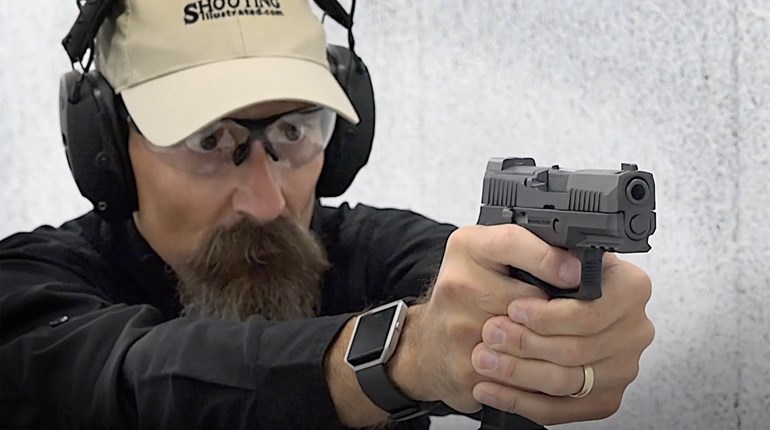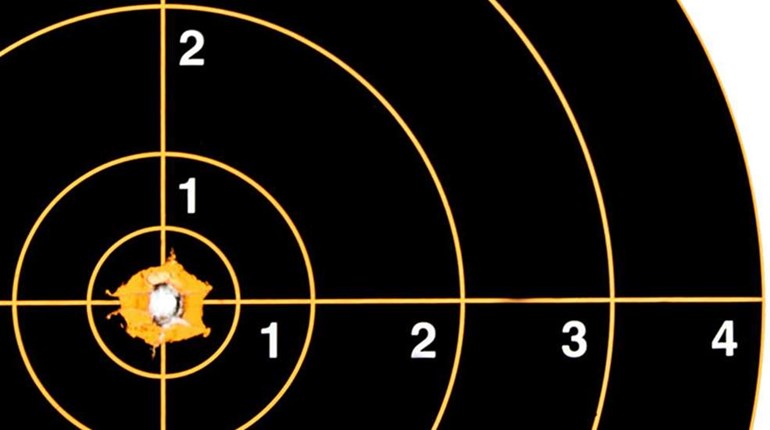
We, as concerned and responsible citizens of a free republic, are today challenged by some of the most pressing questions of our time. What techniques are available to protect myself and my family if surrounded or attacked by a mob? How do you keep a calm mind in difficult situations so you are able to think clearly? Should you interact with or ignore verbal aggression? What advice is there for using your vehicle to either escape from or use as appropriate force against a mob? If community safety continues to deteriorate, is it better to shelter in place or leave the area? What are viable options for defending your home and your family from extreme physical violence?
Working as a federal contract instructor in Quantico, VA, at the end of delivering a week-long, train-the-trainer program, I asked the newly trained instructors if there were any questions. One query worth sharing was about self-defense against a physical attack. The question was “What is the one technique guaranteed to work every time?” The answer is “there is no such technique.” If there was one, we would all know it.
Although there is no such secret-ninja, guaranteed technique or hard skill that exists, there are recommended soft skills to help support your safety and that of your loved ones. These are awareness, avoidance and appearance.
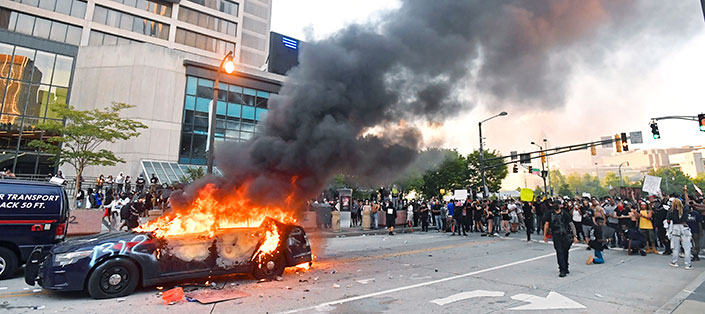
Awareness
The first and foremost recommended soft skill is awareness. Awareness is the currency that affords you time to act. Stay informed. Seek out current and relevant information referencing riots, protests, crime and other areas of concern in your immediate area.
Environmentally speaking, situational awareness is knowing what goes on around you. Whether at home, in your car or on foot, applying good situational awareness eliminates such potential threats as being surprised or placing yourself behind the action-reaction power curve. As such it can be used to control your environment.
You must be willing to hope for the best but plan for the worst. Using mental imagery, visualize yourself in the middle of your worse-case nightmare before it occurs. What would you do? What are your options? How would you best respond?
Protection experts often use situational awareness as a deterrent. When a predator knows you are on to them, the element of surprise has been removed and attenuates their motivation. Situational awareness keeps you informed of what your environment is telling you and a step ahead of events emerging around you. It keeps you connected to your surroundings and prepared. When effectively applied, situational awareness can be used to take control of your environment, act as a deterrent and make you a harder target.
Avoidance
The second-most-useful soft skill is avoidance. In any real-world altercation, your choices are to avoid, mitigate or defend against the threat. Think of a violent physical threat as a freight train coming straight at you. Using this mental-image, you have only one of three choices: Either avoid the freight train altogether, mitigate or make less its impact on yourself or your family or put your hands up and defend against the inbound violence.
Avoidance is the superior answer. If you don’t show up for a “peaceful protest” or a mugging, then you cannot be assaulted. Avoidance is, above all, the number-one soft skill that can be applied to any violent physical threat.
Appearance
Failing awareness and avoidance, you may have wittingly or unwittingly placed yourself in a less-than-optimal scenario. You may find yourself staring straight down the barrel of a potential threat. Those intent on causing harm will perceive you as either a soft target or hard target. You want to appear as a hard target—make them ask the question “Are there softer targets?” and respond “Yes.”
To do this, you can eliminate soft-target indicators such as “do you appear to be unaware?” “do you appear to be weak?” or “do you appear to be alone?” You can be any one or even any two of these things, but if you appear to be all three combined, it is like hitting the jackpot in Las Vegas for the predator.
Another soft-target indicator is a breach of informational security (INFOSEC). The information you share can be used against you. Do the bumper stickers on the back of your car tell a predator how many kids you have? Where they go to school? Where you live? A breach of INFOSEC can cause a predator to deliberate: “Is this an easy mark?” Avoid displaying either identifying or potentially antagonistic observable messages.
Soft Skills Applied
The three most recommended soft skills can be applied to the three most prominent environments of your day-to-day activity: at home, in your car and when you are on foot. Your home and your car are considered controlled areas in that you have nearly complete control of that environment. You are most vulnerable when moving between controlled areas.
In Your Home
Starting at home, you have plenty of time and opportunity to prepare for a home invasion. Such preparation should include concentric rings of protection to deter interest in your home, detect the presence of any intruders, delay their entry and defend against a violent physical attack.
Deterrence is simply a matter of causing would-be home invaders to look for softer targets. Gates, fences, alarm systems and outdoor lighting with motion sensors are a good start. Removing any tools, ladders or valuables within eyesight and accessibility are additional simple, low-cost preventive measures to deter interest in your home.
If they are not deterred and decide to move into your home’s exterior, your next-best protective measure is to detect the presence of an intruder. The sooner you can detect an invasion, the sooner you can call it in and begin critical-incident management. Failing detection, the next concentric ring of protection should be delay. Reliable locks on the doors, difficult-to-open windows and other access-control points are what support delay in a home invasion. The longer you and/or first responders have to respond, the better.
Failing deterrence, detection and delay, your only remaining option is defense. At this stage, the criminal(s) have defeated all earlier protective measures and have effectively pressed you into physical defense.
State law varies from “shall retreat” (try to reason with them because you are not permitted to use force) to “castle doctrine” (you have the immediate right to use deadly force to protect your home and family) and everything in between.
Depending upon those laws, you may want to consider a designated “safe” room—that is, find a location inside your home where there is only one way in and one way out (single ingress/egress point) that you can clearly monitor and control from a position of advantage. You should have an ample supply of food, water, light (flashlight), firearms and ammunition as well as a backup cell phone, satellite phone or radio (means of communication) plus chargers and batteries. You may be holed up for a while based on the circumstances, so be prepared for the worst.
Have an emergency action plan (EAP) and review that plan with your family in detail. Run drills at alternative intervals to work out any questions or concerns.
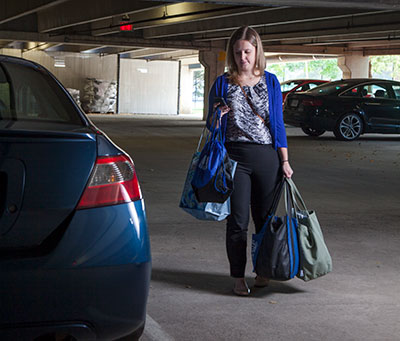
In Your Car
Your vehicle, like your home, is a controlled area around which you can apply similar and concentric rings of protection. You can lock all your doors, roll up all your windows, stay off your phone and refrain from engaging or distracting conversation with any passengers when approaching a potentially high-threat environment.
Awareness, avoidance, and appearance apply equally to your car as they do to your home. Your vehicle is a controlled area on wheels. Stay alert and aware. Your situational awareness provides your earliest warning something bad may be about to happen. Using your awareness, if you detect a potential threat, keep moving. A moving target is harder to engage than a stationary one.
Avoidance is critical. If it’s not absolutely necessary to roll through a group of protestors lighting police cars on fire, then don’t do it. Predators are attracted to softer targets. Remaining aware, alert and prepared to do what it takes to solve a potential problem and you are—and just as important, will appear to be—a more difficult target.
If you perceive that your life and limb or those of your family may be at risk as the mob begins to smash your windows in, then your options are limited. You could stop the car and attempt some physical-defense technique, use the vehicle itself as a justifiable use-of-force option or some combination of the two. Keep in mind all of your activity is almost certainly being recorded, and you may very well end up sitting before a grand jury to defend your decisions and actions.
On Foot
Maneuvering through an airport, shopping center or grocery-store parking lot to your car places you at a disadvantage against a determined assailant or mob because you are external to a controlled area. Applying our soft skills to being on foot, the need for awareness is amplified. If you cannot avoid this condition, then heightened awareness and being mentally prepared to engage a physical threat are your most effective protective measures.
If you detect an intercept approach, one viable option is to duck into a controlled area. If you are confronted with verbal aggression, then read the need. If what they want is for you to chant some slogan, do what it takes to create a bigger reactionary gap between yourself and the perceived threat, move toward a controlled or egress area or a position of advantage. Your primary objective is to de-escalate the situation, not convert it to a violent engagement.
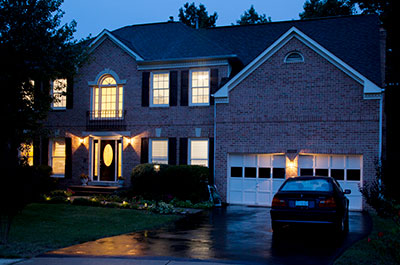
Calmness
Your most powerful weapon—your mind—plays a critical role in building mental resilience and confidence. Protection experts who work in high-threat environments, are sometimes armed only with this weapon. They need to remain calm and collected when under duress, and they must have what it takes mentally to be successful. To achieve the same success is to choose the mindset that will best serve you.
Remaining calm under duress is a function of mental toughness. Mental toughness is the measure of individual resilience and confidence that can project success at home, at work, in competition and under duress. It refers to any set of positive non-physical attributes that helps you to cope with the threatening situation and perform under duress and in difficult situations.
You must be willing to hope for the best but plan for the worst. Using mental imagery, visualize yourself in the middle of a worst-case nightmare before it occurs. What would you do? What are your options? How would you best respond? If you plan ahead of time, run that movie in your imagination and work out solutions mentally, then, if it ever happens, you’ve already consciously worked through the problem and are far more prepared than the softer target next to you. Remaining calm makes you a harder target.
Shelter or Shuttle
If things have deteriorated so badly in our society that we are unable to uphold the rule of law, then only the strong will prevail. The decision to shelter in place or leave is one that can only be made based on the totality of circumstances. What are your options? What are the advantages and disadvantages of each? Who and how many are with you? As you are the protective agent of your family, you are responsible for their safety and well-being. Are they healthy? Injured? Are there any short and long-term medical considerations? Are they capable of movement as a group? What are your contingency plans? Having viable answers to these tenuous questions and a detailed plan of action ahead of time makes you a harder target.
You now know what all protection experts know, that applying your situational awareness affords you control of your environment, acts as a deterrent and makes you a harder target. Avoidance is the “A” answer in most scenarios. If you look like a hard target, think like a hard target and act like a hard target, then you will be a hard target. Amidst the raging chaos of civil unrest, the predator will seek softer targets.










